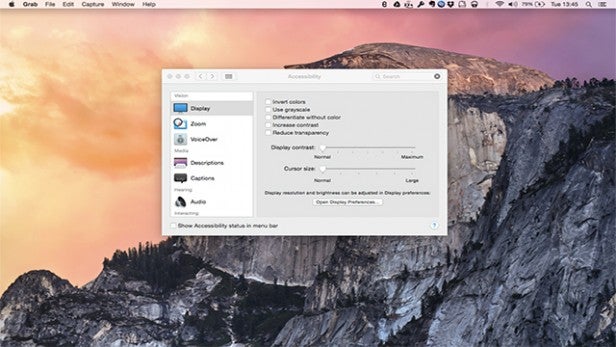
- #YOSEMITE MAC OS WHAT FILE SYSTEM WHILE IT RECOGNIZE FOR MAC#
- #YOSEMITE MAC OS WHAT FILE SYSTEM WHILE IT RECOGNIZE INSTALL#
- #YOSEMITE MAC OS WHAT FILE SYSTEM WHILE IT RECOGNIZE WINDOWS#
Most importantly, as the data volume increases on APFS HDDs, its performance plummets. Some APFS features even won't work with HDDs. Therefore, APFS shows higher and more stable performance on SSDs and Flash storage when compared to on other disks, like HDDs.

Apple File System is designed and optimized for SSDs and Flash storage devices.

Instead, formatting the external drive to exFAT, which has higher OS compatibility.
#YOSEMITE MAC OS WHAT FILE SYSTEM WHILE IT RECOGNIZE WINDOWS#
#YOSEMITE MAC OS WHAT FILE SYSTEM WHILE IT RECOGNIZE FOR MAC#
Though APFS is the default file system for Mac internal hard drives, it also can be used on external hard drives.īut notably, if you prepare to use the external hard drives under these scenarios, you shouldn't format it to APFS. For Apple Partition Map (APM), it is used on old PowerPC Mac devices. While Master Boot Record (MBR) is only compatible with Windows computers. GUID Partition Map can be used on Intel-based Macs, Apple M1 Macs, and even some latest Windows computers. Usually, only GUID Partition Map (APM) is available for APFS format. APFS Partition scheme: use Apple Partition, GUID, or MBR More specifically, old Mac machines with macOS 10.12 Sierra, OS X 10.11 El Capitan, OS X 10.10 Yosemite, or earlier releases cannot support APFS. You may have a question like this "Can older Macs read APFS?" Mac OS before macOS 10.13 High Sierra cannot read or write APFS formatted drives. All Mac devices with SSDs before 2016 are automatically converted to APFS when updating OS. But the official use of APFS was since macOS 10.13 High Sierra. When did Apple switch to APFS?Īpple experimental supports for APFS in macOS 10.12.4 Sierra. And the feature "encrypted" means that encryption is available for the volume.įeaturing snapshots, encryption, space sharing, clones, crash protection, etc., APFS brings the data storage and transfer performance to a new level. The feature "case-sensitive" means the file and folder names will differentiate the upper and lower cases. There are four types of APFS in Disk Utility, including APFS, APFS (Encrypted), APFS (Case-sensitive), APFS (Case-sensitive, encrypted).

It has replaced Mac OS Extended to be the default file system for Mac startup disk from macOS High Sierra (10.13) in 2017.

Source: From What is APFS?ĪPFS (Apple File System), like other file systems, is a process that controls how is data stored and retrieved on a storage device, like hard drives. Mac OS Extended: Is APFS better than macOS Journaled Here we've studied the features and defects of APFS and guide you when you should use APFS format. Here is from the system log: sandboxd: () perl5.18(11381) deny file-read-metadata /opt/msipp/Net/IPP/IPP.pm ) at /usr/libexec/cups/backend/msipp line 73.
#YOSEMITE MAC OS WHAT FILE SYSTEM WHILE IT RECOGNIZE INSTALL#
Here is from the cups error_log: Can't locate Net/IPP/IPP.pm in (you may need to install the Net::IPP::IPP module) contains: /opt/msipp. It works perfectly in 10.7-10.9, but 10.10 (Yosemite) apparently has a new sandbox feature that stops me from including a file from a subdir in "/opt". I have made a custom CUPS backend in Perl.


 0 kommentar(er)
0 kommentar(er)
